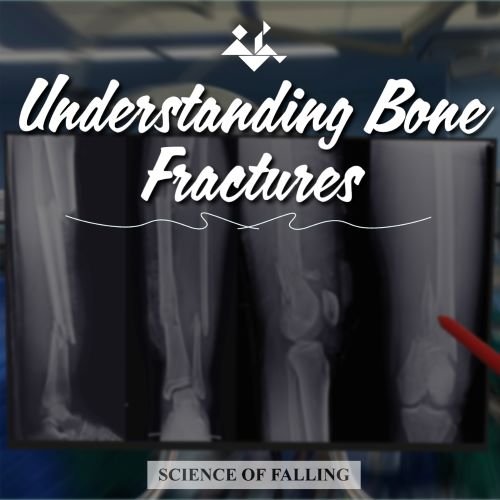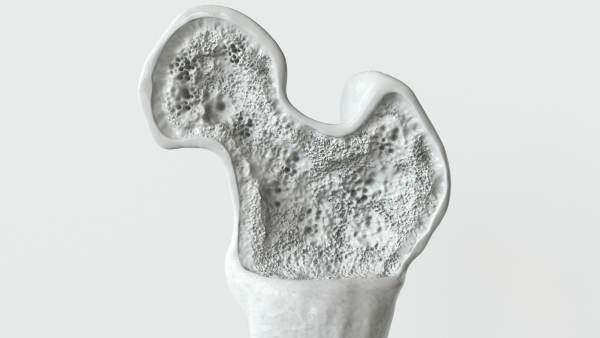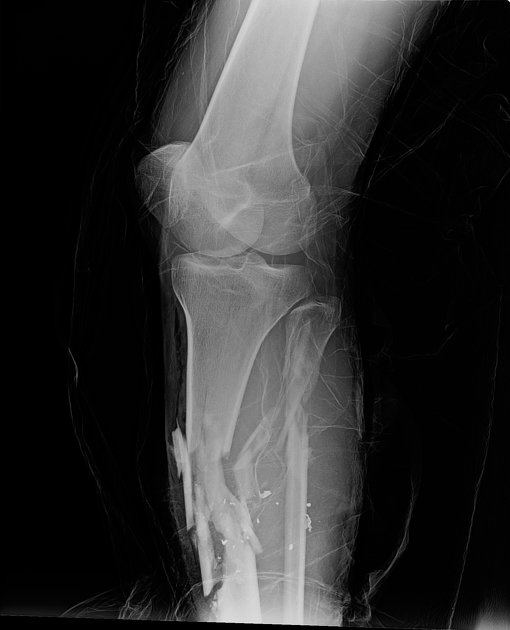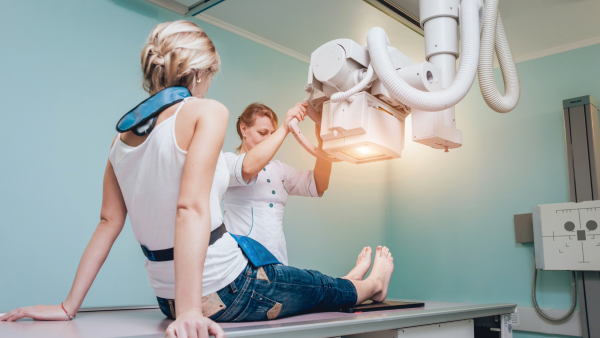Understanding Bone Fractures
Essential Points:
Falls and Bone Fractures: Falls are the leading cause of fractures, especially among older adults. Age, health conditions, and environmental hazards all contribute to an increased risk of fracture, highlighting the importance of proactive prevention strategies.
Bone Health and Fall Prevention: Bone density, strength, and balance play key roles in preventing fractures. Healthy lifestyle choices, including exercise, nutrition, and awareness of environmental factors, can significantly reduce fracture risk, especially as we age.
Types and Impact of Bone Fractures: Fractures can vary widely in severity, from closed fractures to more complex comminuted breaks. Understanding fracture types, their causes, and their impact can help in prevention and effective treatment.
We can all agree that falling unexpectedly is awful!
Whether we hurt our ego, or our body, falling is never fun. This lack of fun is compounded ten-fold when a fall results in a bone fracture. But what exactly causes a bone to break? What are the different types of bone breaks? What does recovery look like?
Understanding the intricacies of bone fractures is both fascinating and crucial when it comes to reducing risk of fracture and post-fall care. In this article, we are going to take a deep dive into the relationship of falling and fractures, what a fracture may look like, and post-fall treatment.
Falling and Bone Fractures
Falls constitute a significant risk factor for bone fractures and are the second leading cause of unintentional death world wide, for those aged 65 years or older it is the number one cause of unintentional death. (1, 2) In fact, 10-15% of fall injuries are fractures and around 95% of hip fractures occur due to falls. (3, 4) Understanding the dynamics of falling and bone fractures is essential for both prevention and effective management.
The impact forces generated during a fall can subject bones to immense stress, leading to various fracture types. Falls that lead to fractures are most often multifactorial in nature, meaning that many issues may be present at one time increasing the likelihood of falling and being injured. (5) The risk of fracture increases with factors such as age (due potentially weaker bones and muscles), underlying health conditions (cancer, diabetes, dementia, osteoporosis, etc.), and environmental hazards (slippery floors, poor lighting, objects in the surrounding area).
Impact of Age on Susceptibility to Fractures from Falls
Age plays a crucial role in determining the susceptibility to fractures resulting from falls. In the elderly, decreased bone density, changes in balance, and decreased strength all increase your vulnerability to fractures, particularly in weight-bearing bones like the hip and spine. Reduced power (speed x strength) as we age increases the risk of falling significantly due to an inability to stop a fall after the initial loss of balance. (6) In fact, balance may start to deteriorate as early as 50 years old in some people and may not be noticed due to compensatory strategies. (7) Understanding how you can prevent these areas of decline gives you an edge against falls that lead to fractures.
Despite common belief, conditions such as osteoporosis and muscle loss due to age (sarcopenia) are not necessarily guaranteed the older you get. Even balance loss is not set in stone as you age. All three of these factors, for the majority of the population, are associated with lifestyle choices. To ensure you have adequate bone density for preventing a fracture you need to have adequate nutrients in your diet (e.g. adequate intake of calcium and vitamin D) that promote bone health, and make sure to load your bones constantly via exercise. (8, 9) In addition to the bone strengthening effect of weight-bearing exercises, your muscles will increase in strength and size helping improve your balance, mobility, and power.
The key is to start dialing in these areas right away to decrease your chances of falling and/or fracturing a bone. Simply start with a basic look into your diet using the current dietary guidelines put forth by the Dietary Guidelines for Americans (or your own home country if preferred) and start a daily exercise regimen targeting all the major muscle groups (legs, back, chest, shoulders). (10)
Impact of Underlying Health Conditions on Susceptibility to Fractures from Falls
Various health conditions can affect the integrity of your bones and your risk of falling. These pathologies can include osteoporosis, bone cancers, diabetes, dementia and many more. For simplicity, risks can be broken down into three categories: pathology that affects bone health, pathology that affects the three balance systems, and pathology that can change behavior.
Pathology Affecting Bone Health
Ailments such as osteoporosis and cancer can affect the integrity of your bones and make them more brittle and prone to fracture. (11, 12) This brittleness leads to a possible inability to withstand the forces of a fall and increase your risk of a fracture.
2. Pathology Affecting Balance Systems
Pathology such as diabetes, stroke, vestibular disorders, and visual disturbances can lead to increased risk of falling due to disrupting the three bodily balance systems. These systems include the visual system, the vestibular system, and the proprioceptive systems. If any one of these systems is disrupted, you may be at a higher risk of falling.
3. Pathology Changing Behavior
Pathology that is known to change behavior, such as dementia and Alzheimer’s, can also lead to a fall at higher rates. (13) Although the exact cause of this increased risk is not readily apparent, the change in normal movement patterns and activity levels leading to decreased fitness and balance may be to blame.
Impact of Environmental Factors on Susceptibility to Fractures from Falls
The environment also plays a large part in your risk of falling and sustaining a fracture. Environmental features that may preclude a fall include: uneven ground, slippery surfaces, low lighting, and clutter on the ground. Depending on the state of the environment the risks of having a fall may increase or decrease, and the chances of a fracture may increase or decrease as well.
It is important to always be aware of your surroundings and adjust your movement according to the environment. Pre-checking surfaces for slickness, turning on lights, and moving dangerous objects out of commonly traveled areas are all key to reducing risk of falling injuries. Be especially aware of uneven and hard surfaces due to increased risk of falling and hard landings.
3 Specific Factors Leading to Bone Fracture
In the broader context, a bone fracture occurs when there is a break or crack anywhere in a bone. For a bone fracture to occur, external forces must be applied to a bone in a way that it's unable to handle. This is where the common term “bone density” comes into play. Bone density plays a large part in sustaining a fracture as it determines the resiliency of a bone during a fall. The direction of force, and the speed of a fall, are also important elements to the type of fracture sustained.
Let’s discuss bone density, force direction, and speed of falling first before moving on to the common fracture types.
Bone Density
As discussed briefly earlier in this article, the density of our bones plays a pivotal role in how they respond to external forces. Bone density refers to the amount of mineral content in bone tissue, which determines its strength and durability. (14) Bones with lower density (less thick) are more prone to fractures. Conditions like osteoporosis are essentially the state of a bone having low density and being structurally brittle. (14) Therefore, high bone density (thick bones) can withstand higher outside forces before sustaining a fracture. Recognizing the connection between bone density and fractures emphasizes the need for proactive measures to maintain bone health throughout life.
Bone density is affected via the following factors (15):
Smoking
Alcohol consumption
Physical activity levels
Nutritional value of your diet
Hormonal changes throughout the lifespan
Age
Secondary medical conditions (e.g. rheumatoid arthritis,
Medication
It is important that you undergo osteoporosis screening if you are a woman over 65, or a male older than 70 years old. (16) Your doctor will be able to order tests and ask additional questions to determine if you are at higher risk for bone fracture.
Fall Velocity and Fall Impact
Once an uncontrolled fall begins, the velocity of the fall and the landing impact can determine the extent of injury. Falls with high-velocity can cause more severe fracture than those with a low-velocity. (17) In this context, velocity refers to the speed of a fall. Using proper falling techniques can reduce the speed of falling and increase chances of avoiding injury.
Your impact direction will also affect the extent of injury and where the injury occurs. For example, if you fall directly on an outstretched hand you are more likely to suffer a hand or wrist fracture. This is termed a FOOSH injury (Fall On Out Sretched Hand). Another example would be that when falling sideways your risk of hip fracture dramatically increases versus forwards or backwards. (18) Practicing proper fall techniques can ensure that you use more resilient parts of your body to reduce injury risk.
Types of Bone Fractures
As mentioned previously, there are various types of bone fractures that may occur. In the context of a fall, the most common types of fracture include:
Closed and Open Fractures
Displaced and Non-Displaced Fractures
Transverse Fracture
Comminuted Fracture
Spiral Fracture
Pathologic Fracture
Greenstick Fracture
Let’s discuss each one in a bit more depth.
Closed and Open Fractures
https://www.radiologymasterclass.co.uk/tutorials/musculoskeletal/trauma/trauma_x-ray_page8
The terms closed and open fractures communicate if a fracture is contained within the body or if the skin has been broken.
If I were to ask you to imagine a typical broken bone, you would most likely imagine a closed fracture. A closed fracture is a bone break that occurs inside the body and does not breach the skin. In other words, a “closed” skin barrier. Although you may be able to tell the bone is broken due to deformity, no blood or bone is showing in this case.
On the other hand, if I asked you to imagine a gruesome accident with fractured bones you may think of an open fracture. Open fractures are when a broken bone breaches the skin barrier and exposes it to the outside environment. The skin is now “open” to the elements. You will often see a clear open wound and possibly pieces of bone sticking out of the skin.
Both types of fracture can occur due to direct trauma such as a fall. The severity of the injury depends on factors such as the force and angle of impact, level of damage to surrounding soft tissues (muscle, ligament, tendon, etc.), damage to blood vessels or nerves, and the cleanliness of the surrounding environment (if an open fracture). Although open fractures may look worse, both types can lead to serious medical complications if not treated immediately.
Be aware that the following fracture types can all be classified as either closed or open depending on if the skin barrier has been breached or not.
Displaced and Non-Displaced Fractures
https://www.radiologymasterclass.co.uk/tutorials/musculoskeletal/trauma/trauma_x-ray_page3
Displaced and non-displaced fractures signify how much a broken bone moved during an injury. If you suffered a fracture and there appears to be a large gap between the ends of the broken bone, this would be termed a displaced fracture. A non-displaced fracture is seen when the ends of a broken bone do not migrate away from each other any significant distance.
Typically, non-displaced fractures are easier to deal with and require less medical intervention (i.e. surgery) to help heal. Since the bone does not move significantly, surrounding structures do not tend to get damaged significantly and secondary complications are limited.
Displaced fractures, due to their nature of moving out of alignment, tend to create more secondary complications. Surrounding soft tissues such as muscle, nerves, and blood vessels can be damaged and need additional medical attention. The symptoms related to these secondary complications can vary wildly.
As with closed and opened fractures, be aware that all of the following fracture types can be classified as displaced or non-displaced.
Transverse Fractures
https://radiopaedia.org/cases/tibial-fracture-transverse-diaphyseal
The defining characteristic of transverse fractures is their linear orientation, typically perpendicular to the bone's long axis.
This pattern often results from a direct force applied at a right angle to the bone, creating a clean break. Common causes include falls, motor vehicle accidents, or direct blows during contact sports.
https://abcnews.go.com/Health/randall-cobbs-leg-fracture-flips-nfl-concussion-conversation/story?id=20574970
Diagnosing transverse fractures involves clinical evaluation and imaging studies, such as X-rays, to visualize the fracture line and assess alignment. The straightforward nature of these fractures simplifies diagnostic procedures, aiding healthcare professionals in determining the most appropriate course of action.
Comminuted Fractures
https://radiopaedia.org/cases/highly-comminuted-fracture-gun-shot-injury
The defining feature of comminuted fractures lies in the bone breaking into three or more pieces.
This complex pattern can occur due to high forces exerted during severe accidents, crushing injuries, or falls from significant heights. The resulting bone fragments may vary in size and can pose intricate challenges for healthcare professionals to deal with.
Various names can be given to different presentations of comminuted fracture such as “segmental fracture” or “butterfly fracture”. These names often give the medical team a better descriptor of the break for treatment purposes.
Diagnosing comminuted fractures involves advanced imaging techniques, such as CT scans, to precisely visualize the fragmented nature of the injury. The detailed insight provided by these scans aids healthcare professionals in planning the most effective course of action. These detailed images can also give insight to secondary injury to soft tissue (muscle, ligament, tendon, etc.) surrounding the fragments.
Spiral Fractures
https://radiopaedia.org/articles/spiral-fracture
The defining feature of spiral fractures is their corkscrew-like appearance, often resulting from a twisting force applied to a bone while one end is stabilized. This distinct pattern distinguishes spiral fractures from other types, and they commonly occur in scenarios such as sports injuries, falls, or motor vehicle accidents where rotational forces impact the bone.
Diagnosing spiral fractures requires a combination of clinical assessment and imaging studies, typically through X-rays or, in more complex cases, CT scans. The twisting nature of the fracture makes these injuries quickly recognizable on imaging, aiding healthcare professionals in determining the appropriate course of action.
Pathologic Fractures
https://orthopaedia.com/pathological-fractures/
Pathologic fractures are often associated with underlying medical conditions that compromise bone strength as discussed early in this article.
These fractures occur at sites weakened by diseases such as osteoporosis or cancer. Benign falls, or even routine activities, may lead to pathologic fractures and demonstrates the close connection between systemic health and bone integrity. A large majority of hip fractures in the elderly occur in this way, secondary to osteoporosis.
Diagnosing pathologic fractures involves a combination of clinical evaluation, imaging studies like X-rays or MRIs, and a thorough assessment of the patient's medical history. Understanding the context of the fracture is necessary to identify and address the root cause, guiding healthcare professionals in tailoring appropriate treatment plans.
Greenstick Fractures
https://pediatricimaging.org/diseases/greenstick-fracture/
Greenstick fractures are characterized by a partially broken bone that can be bent and have fraying ends. The name “greenstick” originates from a similar type of break that occurs when you snap a young green twig from a plant. These types of breaks are usually found in young children under the age of 10 due to the pliability of their bones. (19) Adults don’t have this same type of pliability in their bones and thus do not get greenstick fractures unless under extremely rare circumstances.
Greenstick fractures can occur through any type of traumatic fall and usually occur in the long bones such as the femur, humerus, radius, etc. Diagnosing a greenstick fracture will involve a clinical evaluation, imaging such as x-rays, and an assessment of the mechanism of injury. After the clinical evaluation, the healthcare team will decide on the best course of treatment.
Treatment and Recovery From Bone Fracture
When falls result in bone fractures, the journey to recovery becomes a crucial chapter in an individual's life. After a fall, immediate first aid, medical interventions, and rehabilitation are essential to guide you towards regaining functionality and well-being in your life.
Immediate First Aid for Fractures
The initial moments following a fall-induced fracture are crucial. Immediate first aid can mitigate further damage and set the stage for optimal healing and your return to a normal life.
Stabilization: Securing the injured limb or area is crucial to prevent additional movement and potential exacerbation of the fracture. Immobilization can be achieved through splints, slings, or other makeshift supports. The key is to not move the injured area more than is necessary.
Pain Management: Pain is often instant after a fracture. Over-the-counter pain relievers, administered according to medical guidelines, can offer initial relief until professional medical assistance is sought. If EMTs are called and request that you not take pain medications, the directions should be followed.
Elevation and Ice: Elevating the injured area and applying ice can help reduce swelling and alleviate pain. However, care must be taken to avoid direct contact between ice and the skin. Alleviating swelling may help the medical team once medical treatment begins.
Medical Intervention for Fractures
Seeking prompt medical attention is imperative for a comprehensive assessment of the fracture and the formulation of an appropriate treatment plan.
Diagnostic Imaging: X-rays remain a standard tool for diagnosing fractures, providing detailed insights into the type and extent of the injury. In some cases, additional imaging techniques such as CT scans or MRIs may be employed for a more comprehensive evaluation.
Reduction and Immobilization: Depending on the nature of the fracture, a process known as reduction may be necessary. This involves realigning the broken bone into its proper position. Immobilization, often achieved through casting, bracing, or surgical fixation, follows to maintain the realigned position during the healing process.
Surgical Interventions: In complex fractures, especially those involving joints or multiple bone fragments, surgical intervention may be required. Internal fixation devices like screws, plates, or rods may be utilized to stabilize the fracture and promote optimal healing conditions.
Rehabilitation for Fractures
Recovery extends beyond the initial casting and splinting period. After fracturing a bone you will most likely experience stiffness, weakness, and general discomfort in the area of the fracture. Proper rehab, once the bone is healed, is essential.
Physical Therapy: Tailored exercise programs are designed to rebuild strength, flexibility, and range of motion in the affected area. Physical therapists will work closely with you to address specific needs and challenges associated with your fracture.
Occupational Therapy: For fractures affecting your daily activities, occupational therapy plays a vital role. Therapists can assist you in adapting your routines, developing compensatory strategies, and regaining independence in your daily tasks.
Psychological Support: The emotional impact of a fracture, especially in the case of severe injuries or prolonged recovery, should not be underestimated. Psychological support, whether through counseling or support groups, can help you navigate the mental and emotional aspects of your healing journey.
Navigating the path to healing after a fall-induced fracture is a collaborative effort between you, healthcare professionals, and support networks. The continuum of care, from immediate first aid to rehabilitation, underscores the holistic approach required for your successful recovery. Each phase contributes to the restoration of physical function, emotional well-being, and overall quality of life, allowing you to emerge from the experience with resilience and renewed strength.
Final Thoughts
Understanding the intricate relationship between falls and bone fractures is paramount for effective prevention and management strategies. Falls represent a significant risk factor for bone fractures, particularly among the elderly population, where they are the leading cause of unintentional death. By comprehending the dynamics of falling and its impact on bone health, individuals can take proactive measures to mitigate risks and enhance overall well-being.
Factors such as age, underlying health conditions, and environmental hazards significantly contribute to the susceptibility to fractures from falls. Aging processes, including decreased bone density and muscle strength, render individuals more vulnerable to fractures. However, lifestyle choices such as proper nutrition and regular exercise play a pivotal role in maintaining bone health and reducing fracture risk.
Furthermore, understanding the specific factors leading to bone fractures, such as bone density, fall velocity, and impact direction, provides insights into the nature and severity of injuries. Various types of fractures, from closed and open fractures to pathologic and greenstick fractures, necessitate tailored diagnostic and treatment approaches to optimize recovery outcomes.
Immediate first aid, prompt medical interventions, and comprehensive rehabilitation efforts are essential components of the healing journey following a fall-induced fracture. Collaborative efforts between individuals, healthcare professionals, and support networks facilitate holistic care, addressing physical, emotional, and psychological aspects of recovery.
By fostering awareness, adopting preventive measures, and embracing comprehensive care approaches, you can navigate the path to healing after a fall-induced fracture with resilience and renewed strength, reclaiming your quality of life and well-being.
References
Falls (no date) World Health Organization. Available at: https://www.who.int/news-room/fact-sheets/detail/falls (Accessed: 12 February 2024).
CDC (2007) ‘Fatalities and injuries from falls among older adults—United States, 1993-2003 and 2001-2005’, JAMA, 297(1), p. 32. doi:10.1001/jama.297.1.32.
Tinetti, M.E. et al. (1995) ‘Risk factors for serious injury during falls by older persons in the community’, Journal of the American Geriatrics Society, 43(11), pp. 1214–1221. doi:10.1111/j.1532-5415.1995.tb07396.x.
Hayes, W.C. et al. (1993) ‘Impact near the hip dominates fracture risk in elderly nursing home residents who fall’, Calcified Tissue International, 52(3), pp. 192–198. doi:10.1007/bf00298717.
Berry, S.D. and Miller, R.R. (2008) ‘Falls: Epidemiology, pathophysiology, and relationship to fracture’, Current Osteoporosis Reports, 6(4), pp. 149–154. doi:10.1007/s11914-008-0026-4.
Simpkins, C. and Yang, F. (2022) ‘Muscle Power is more important than strength in preventing falls in community-dwelling older adults’, Journal of Biomechanics, 134, p. 111018. doi:10.1016/j.jbiomech.2022.111018.
Hall, K.S. et al. (2016) ‘Physical performance across the adult life span: Correlates with age and physical activity’, The Journals of Gerontology Series A: Biological Sciences and Medical Sciences [Preprint]. doi:10.1093/gerona/glw120.
Calcium/vitamin D requirements, Recommended Foods & Supplements (2023) Bone Health & Osteoporosis Foundation. Available at: https://www.bonehealthandosteoporosis.org/patients/treatment/calciumvitamin-d/ (Accessed: 12 February 2024).
Be bone strongTM – weight bearing (2024) Bone Health & Osteoporosis Foundation. Available at: https://www.bonehealthandosteoporosis.org/preventing-fractures/exercise-to-stay-healthy/weight-bearing/ (Accessed: 12 February 2024).
Current dietary guidelines (no date) Current Dietary Guidelines | Dietary Guidelines for Americans. Available at: https://www.dietaryguidelines.gov/current-dietary-guidelines (Accessed: 12 February 2024).
Patients at high risk of fracture: International Osteoporosis Foundation (no date) IOF International Osteoporosis Foundation. Available at: https://www.osteoporosis.foundation/health-professionals/prevention/patients-high-risk-fracture (Accessed: 12 February 2024).
Vestergaard, P., Rejnmark, L. and Mosekilde, L. (2009) ‘Fracture risk in patients with different types of cancer’, Acta Oncologica, 48(1), pp. 105–115. doi:10.1080/02841860802167490.
Fernando, E. et al. (2017) ‘Risk factors associated with falls in older adults with dementia: A systematic review’, Physiotherapy Canada, 69(2), pp. 161–170. doi:10.3138/ptc.2016-14.
Bone mineral density tests: What the numbers mean (2023) National Institute of Arthritis and Musculoskeletal and Skin Diseases. Available at: https://www.niams.nih.gov/health-topics/bone-mineral-density-tests-what-numbers-mean (Accessed: 12 February 2024).
How to keep your bones healthy (2022) Mayo Clinic. Available at: https://www.mayoclinic.org/healthy-lifestyle/adult-health/in-depth/bone-health/art-20045060 (Accessed: 12 February 2024).
Osteoporosis: What you need to know as you age (2022) Johns Hopkins Medicine. Available at: https://www.hopkinsmedicine.org/health/conditions-and-diseases/osteoporosis/osteoporosis-what-you-need-to-know-as-you-age (Accessed: 12 February 2024).
Komisar, V. and Robinovitch, S.N. (2021) ‘The role of fall biomechanics in the cause and prevention of bone fractures in older adults’, Current Osteoporosis Reports, 19(4), pp. 381–390. doi:10.1007/s11914-021-00685-9.
Kleiven, S. (2020) ‘Hip fracture risk functions for elderly men and women in sideways falls’, Journal of Biomechanics, 105, p. 109771. doi:10.1016/j.jbiomech.2020.109771.
Cleveland Clinic Staff (no date) What is a greenstick fracture?, Cleveland Clinic. Available at: https://my.clevelandclinic.org/health/diseases/17812-greenstick-fractures (Accessed: 12 February 2024).
Thank you for checking out this article on bone fractures. I would to love hear your thoughts and personal experiences with fractures. Leave a comment and share!
Happy falling!


















